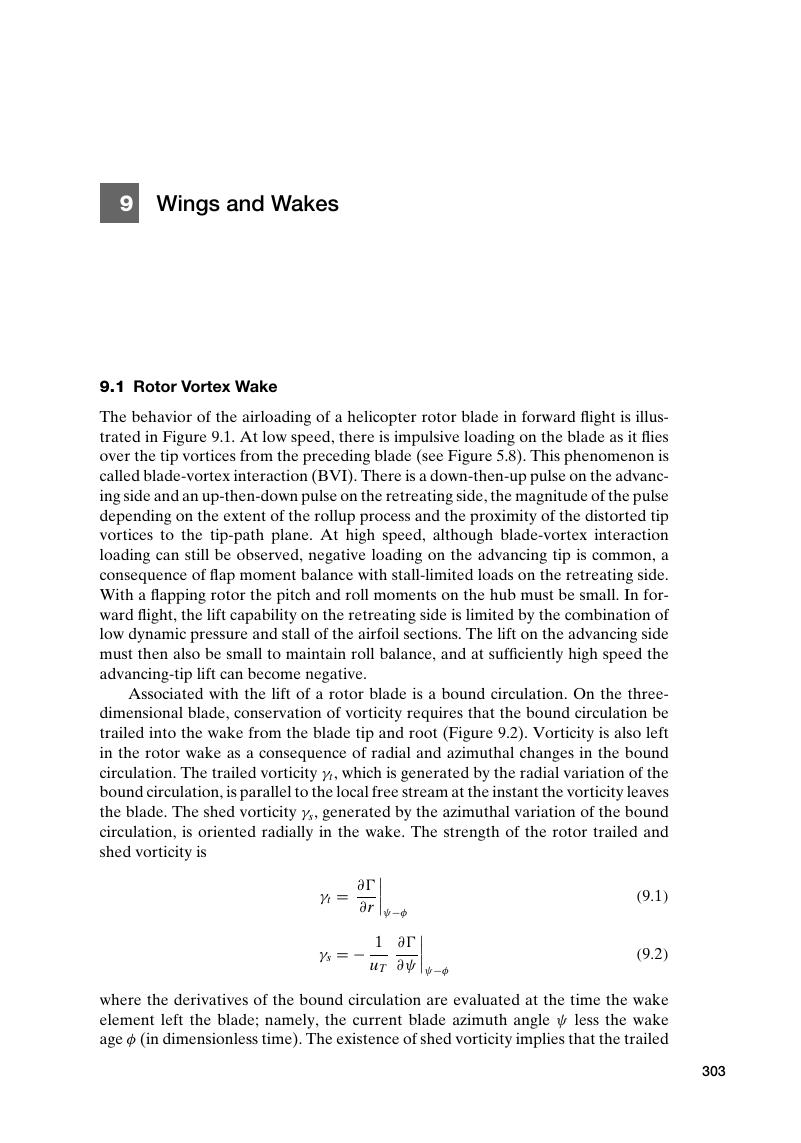Book contents
- Frontmatter
- Contents
- Preface
- 1 Introduction
- 2 Notation
- 3 Hover
- 4 Vertical Flight
- 5 Forward Flight Wake
- 6 Forward Flight
- 7 Performance
- 8 Design
- 9 Wings and Wakes
- 10 Unsteady Aerodynamics
- 11 Actuator Disk
- 12 Stall
- 13 Computational Aerodynamics
- 14 Noise
- 15 Mathematics of Rotating Systems
- 16 Blade Motion
- 17 Beam Theory
- 18 Dynamics
- 19 Flap Motion
- 20 Stability
- 21 Flight Dynamics
- 22 Comprehensive Analysis
- Index
- References
9 - Wings and Wakes
Published online by Cambridge University Press: 05 May 2013
- Frontmatter
- Contents
- Preface
- 1 Introduction
- 2 Notation
- 3 Hover
- 4 Vertical Flight
- 5 Forward Flight Wake
- 6 Forward Flight
- 7 Performance
- 8 Design
- 9 Wings and Wakes
- 10 Unsteady Aerodynamics
- 11 Actuator Disk
- 12 Stall
- 13 Computational Aerodynamics
- 14 Noise
- 15 Mathematics of Rotating Systems
- 16 Blade Motion
- 17 Beam Theory
- 18 Dynamics
- 19 Flap Motion
- 20 Stability
- 21 Flight Dynamics
- 22 Comprehensive Analysis
- Index
- References
Summary

- Type
- Chapter
- Information
- Rotorcraft Aeromechanics , pp. 303 - 365Publisher: Cambridge University PressPrint publication year: 2013
References
- 2
- Cited by



